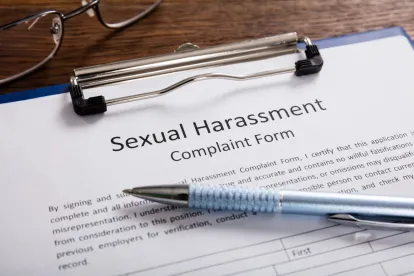On 25 September, we were joined at our London office by clients and contacts for a discussion on sexual harassment in the workplace, in particular the proposals set out by the UK government in its consultation document. The event was a great success and we are grateful to our panel of high profile speakers for sharing their experiences and insights on this topic.
As well as sharing views on the government’s proposals, we also discussed the practical steps that companies could be taking now to prevent and respond effectively to sexual harassment in the workplace. Suggestions included:
-
Policies and procedures – yes, we all know that employers should have guidance in place so that employees are clear about the standards of behaviour expected of them in the workplace. There should also be clear policies in place so that staff know what to do if they have been sexually harassed at work. But when was the last time you reviewed and updated these policies and/or reminded your staff about what they actually say? You can have the best policies in the world, but if nobody knows about them, they are not worth the paper they are written on. Leaving them gathering dust in an obscure corner of your intranet or languishing under Legal Notices with that modern slavery statement won’t really cut it for these purposes. If you are serious about deterring sexual harassment in the workplace and achieving cultural change, you need to ensure that your staff are as clear as they can be about what they can and cannot do and how they can raise concerns about such behaviours in the workplace. Giving your policies the appropriate profile will also be an important step in being able to defend a sexual harassment claim (see our previous blog in this series on the statutory defence).
-
How accessible are your policies and procedures? Are they written in plain English? Will your staff understand what they need to do if, for example, they want to raise a complaint about sexual harassment? Sometimes HR professionals and lawyers are so familiar with the process, it is easy to forget that your typical employee is not and lapse into HR shorthand or legal jargon. Policies and procedures should not be overly legalistic – remember who your audience is and tailor them accordingly. Employees need to understand what a sexual harassment investigation would actually involve, as this can help to avoid situations where allegations are raised but then retracted when the scale of the process becomes clearer.
-
Anonymous surveys – have you ever asked your staff whether they have experienced sexual harassment in the workplace, whether they raised a complaint about it and, if not, why? One thing we talked about at the panel event was the value of issuing an anonymous survey to the workforce to help you understand whether your organisation has a problem and, if so, what the issues are. It’s easy to think that because you haven’t received any grievances or complaints about sexual harassment, such behaviour is not a problem in your workplace. But many surveys reported in the press seem to suggest that sexual harassment is a problem in most workplaces. Okay, it might be scary to ask the question because you might not like the answer, but if you are serious about all this, then it may only be by asking the question that you will understand whether you have a material problem and what you might need to do to address it. PS: be careful about what you write down in the course of your internal post mortem of any such survey – it is very likely that any written discussion of it will be disclosable in litigation.
-
Training – again, we all know that employers should provide training to their staff about the standards of behaviour expected of them. Next time you are preparing a training session, think about tailoring it to reflect the particular issues or areas of risk in your business – maybe those that have been identified in your anonymous survey? Training is always more impactful if it has been tailored to meet the needs of the audience; you are also likely to get greater buy-in and engagement with your staff. At our panel event, we talked briefly about “bystander training”, which is where individuals receive training on how to be an “active bystander” and challenge sexual harassment in the workplace by intervention in the moment, concern for the victim and active reporting of events where the victim may not feel able to do so. Most traditional training sessions focus on victims and perpetrators even though the vast majority of your employees will never be either. Research shows that bystanders can play an important role in preventing, discouraging and/or intervening when acts of harassment have the potential to occur.
-
Stamp out “low level” harassment – we talked about the importance of establishing a clear zero tolerance policy for any type of sexual harassment. Employers should ensure that staff feel comfortable challenging even less serious incidents, as this helps to promote a culture where any forms of sexual harassment are not tolerated. This is where bystander training may come in helpful – people are more likely to feel confident about challenging inappropriate behaviour if they have been given training on how to do this in a safe manner. Employers should always ensure that their responses are proportionate to the offence – by all means dismiss for the most serious cases, but be ready and willing to deal with lesser matters through lesser action, potentially not even of a disciplinary nature but counselling, coaching or mediation, for example.
-
Workplace champions/guardians – a number of clients have trained members of their workforce to act as “sounding boards” for colleagues who wish to share concerns about workplace issues, but do not want to trigger a formal procedure, at least not initially. The intention is that such individuals are available as an initial point of contact for advice and as a “signposter” of options for resolution. Both parties need to be clear as to the effect of sharing a concern in this way – is it strictly confidential or does it count as a formal disclosure to the employer with all that that entails in terms of follow-up action?
-
What can you learn from other sectors/industries/countries? At our panel event we talked briefly about initiatives that have been put in place in the higher education sector to tackle sexual harassment and to support staff and students who have experienced harassment and sexual misconduct. We also discussed the new obligations in New York for employers to provide mandatory sexual harassment training for their staff. See previous blog here. There are lots of interesting approaches being developed and private sector employers should think about what they can learn from these for their own businesses.




 />i
/>i

